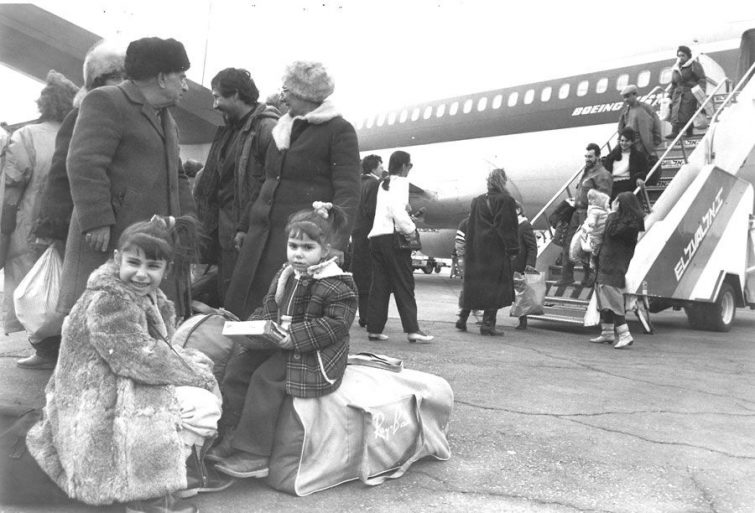Getting your Trinity Audio player ready...
Israel has welcomed some 3.3 million immigrants since its creation in 1948, the Central Bureau of Statistics (CBS) said in a report on Monday.
Of that number, 43.7% have immigrated since 1990, when Jews in Soviet states were finally allowed to leave with the collapse of the USSR.
The report was published by CBS ahead of International Migrants Day, which is on December 18.
In 2018, Israel welcomed 37,200 new migrants, out of the 28,100 were olim hadashim (Jewish new immigrants who made aliyah - moved to Israel - under the Law of Return), a rise of 6.6% from 2017.
The report showed that the majority of olim were female (51.1%) and between the ages of 15-64 (69.4%).
The average age for an female new immigrant is 33.9 years old.
The countries from which most olim arrived in 2018 were Russia (10,500 people or 37.2%), Ukraine (6,400 people or 22.9%), the U.S. (2,400 people or 9%) and France (2,400 people or 8.7%).
Between January and October 2019, 27,300 new immigrants came to Israel, a rise of 20% in comparison to the year before.
The CBS found that the average number of children aged under 18 years in these families is 2.07, in comparison to 2.37 in Israeli Jewish families.
Of the new immigrants, 11.3% live in single-parent households, compared to 8.8% of Israeli Jews.
The majority of olim expressed contentment with their lives (85%), compared to 92% of Israeli Jews.
Far fewer are content with their economic status, however. Only 55% said they were content with their current economic situation. A little over half (52%) said they are content with their salaries, with 73% saying they could meet their monthly expenses. In all three parameters, the percentages were lower than their for native Israeli counterparts.
The CBS also published data on Israeli migration abroad.
Between 1990-2017, about 574,600 Israelis moved abroad and stayed there for more than a year, an average of 20,500 annually.
The net balance between Israelis migrating out and returning is currently negative. A total of 321,200 Israelis moved out of Israel, with only 253,400 returning home.
Data shows that between 1990-2017, out of the 1.4 million olim who migrated from the former USSR, about 215,000 left Israel with just some 55,000 returning.
About half of Israelis who have moved abroad were olim who came to Israel in the 1990s from the former USSR.
3 View gallery


A protest in Tel Aviv against the deportation of foreign workers from the Philippines and their Israeli-born children
(Photo: Moti Kimchi)
About 106,200 migrant workers reside legally in Israel as of 2018, most of them arriving since 2003.
Of that number, 74% come from one of five: Thailand (23.4%), Philippines (21.3%), India (11.1%), Moldova (9.3%) and China (8.9%).
The number of illegal migrants in Israel as of 2018 stood at about 58,000.
As of 2018, there were 33,600 asylum seekers residing in Israel, most of them arriving from Eritrea (71%) and Sudan (20%). No new entries by asylum seekers were reported for the first time in 2018.



